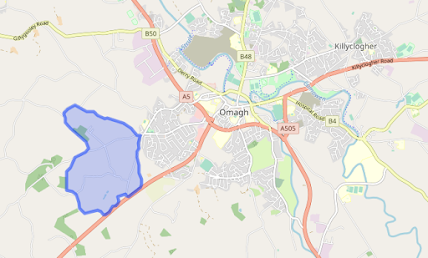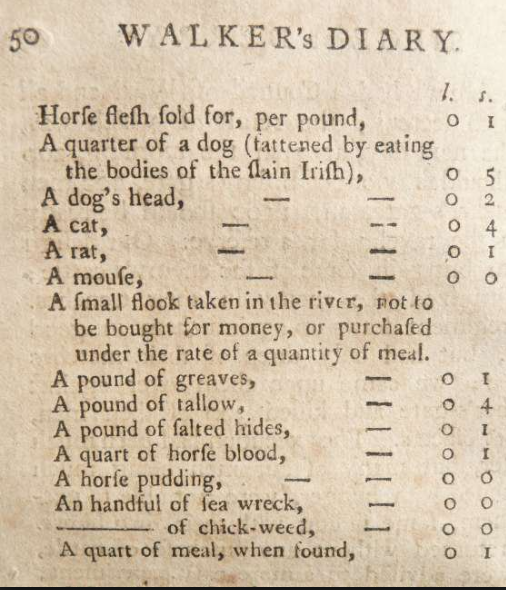Ballygowan in parish of Drumragh, Co Tyrone 1851
Ballygowan is a townland of some 424 acres in the parish of Drumragh in Co Tyrone -
It is locates south-west of Omagh on the main road to Irvinestown:
In 1851 the whole townland was in the possession of Lady Charlotte Burgoyne (formerly Head) - she was the widow of Sir John James Burgoyne and she was his second wife. Sir John James Burgoyne died on 23 May 1838 in his 58th year after a short illness at his seat at Strabane. He had been agent of the Abercorn estate and provost of Strabane.
The Land was put up for sale through the recently established Encumbered estates court.
Establishment of the Land Courts
By the mid-19th Century many of the large Irish estates in
Ireland were in serious financial difficulty. Land owners found themselves
legally obliged to pay out annuities and charges on their land, mainly to pay
mortgages or ‘portions’ to family members contracted by marriage settlements
and/or wills of previous generations. All of these payments had to be met,
before the owner/ occupier could take an income from their estate.
By the time of the Famine, as prices for sale or rental of
land plummeted, the monies that had to be paid out from the individual estates
remained the same, and many Irish estates became insolvent as debts exceeded
earnings. However, the landowners could not sell their estates to discharge
their debts, because the land was entailed. In 1848 and 1849, two Encumbered
Estates Acts were passed to facilitate sale of these estates. Under the second
act, (12 & 13 Vict., c. 77), an Encumbered Estates Court was established,
whereby the state took ownership of these properties and then sold them on with
a parliamentary title, free from the threat of contested ownership.
In 1852, it was replaced by the Landed Estates Courts, which
was itself superseded in 1877 by the Land Judges Court, part of the Chancery
Division of the High Court. Although there were some differences in the powers
of these courts, their principal function remained the same, to sell off
insolvent estates.
The Land Courts system was the first significant step
towards the break-up of the old estates in Ireland. From the genealogist’s
perspective, the Rentals have an added value, because the estate records
(rentals, maps, leases) that would have existed prior to these sales, no longer
survive. This is because once the parliamentary grant to title was secured by
purchase from the Land Courts, there was no need to retain any of the
documentation regarding previous land title.
The Rentals are effectively printed sale-catalogues, which
were circulated to prospective purchasers in advance of the sale. They were
compiled with the intention of attracting purchasers and of providing
information on the estate in a clear and uniform manner. The Land Courts sold
estates in every county in Ireland, and the Rentals as a whole cover large
parts of the country. The estates now sold included urban as well as rural
property, and many of the Rentals relate to houses and other buildings in
villages, towns and cities. The information is printed and presented in a
standard manner.
The Landed Estates Court “Rentals” are an important source for
Irish family history, as they provide extensive information about land
occupation in the mid-nineteenth century, often including information back to
the 18th century. They were printed to facilitate the sale of bankrupt estates
and include information about tenants, the lots they rented, the terms of their
tenancy, as well as a map specifying the boundaries. More than 500,000 tenants
are recorded in these documents dealing with more than 8,000 estates throughout
the country.
The Burgoyne tenants in Ballygowan were only tenants from year to year and had less security than those tenants who held terminable leases or perpetuity leases:
For the record the list of tenants in Ballygowan (also given as Ballygowans because there was an upper portion and also a nether portion) was as follows -
Wm Watson, Frances Kelly, Stephen McDead, Philip Maguire, Charles McNulty, John Lafferty, Chas McCaffray, James Tracey, Andrew Higgins, Robert Colter, James Lafferty, William McCullow, Peter Nugent, Patrick Nugent, William Conway, Robert McAuly & Owen Lafferty (T866/4).




This comment has been removed by a blog administrator.
ReplyDelete